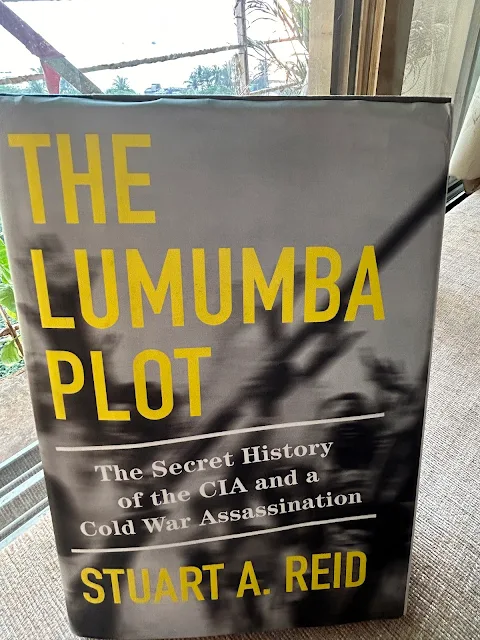THE LUMUMBA PLOT
The Secret History of the CIA and a Cold War Assassination
The race of one-upmanship between USA and USSR during the cold war era was heating up. The competing blocks fought for the supremacy in all aspects of life and at any cost. The roles of their agencies CIA and KGB was very crucial and is well documented in the now declassified files.
This book is written by Stuart A Reid who is executive editor of Foreign Affairs magazine and is now associated ith CFR. It revolves around the Democratic Republic of Congo which was also known as Zaire for some time. The central African country is one of the largest country in the world criss-crossed by River Congo. The country was a personal estate of King Leopold of Belgium before becoming the colony of Belgium.
After a brief struggle, the country got its Independence on 30 June 1960 but due to absense of administrative machinery and institutions to support the sudden withdrawal of Belgians, the country fell into a chaos. The USA-Soviet blocks and cold-war era politics had taken Congo as a casualty and even today it is not stable.
The book is a piece of research and yet it retains the charm of a true spy novel. The author has used his vast knowledge of association with diplomatic world, research on Africa, classified files, cables, private letters, government archives, Congress Committees proceedings, record and interviews. He has beautifully intertwinned the academic research and lay-men story telling format to give a classic work otherwise it would have become a work with a limited readership.
The book traces origins of the Congo's independence and emergence of its first Prime Minister Patrice Lumumba who lead the freedom struggle. The author states "He was his country's greatest politician and perhaps its worst statesman." He was one of the earliest literate native who organised and agitated for independent Congo which was divided on racial and ethnic lines. However he was murdered by fellow Congolese with active role of Belgium and conspiracy of CIA as the book points about role of Devlin, station head of CIA in Congo. His friend Joseph Mobutu whom he trusted and appointed as the Army chief was the one who turned against him and assumed role of country head by Coup. He ruled for decades after deposing Lumumba.
The book is rich source on how cold war poltics worked out and how African nations were on platter for blocks is lucidly explained along with the role of UN which was in a nascent stage and evolving for world peace. Lumumba was PM of Congo for a brief period but could not see his country prosper and stable and lead Africa. He was assassinated at the age of 35 in January 1961. The book presents clear evidence of meddling by foreign powers in the domestic affairs of a newly born country and instead of helping it to grow and develop, the energies were pulled out to destablise and capture the natural resources or make them pawn in the power games. The tragic life loss of UN Chief Dag Hammarskjold in a mysterious plane crash made the matters worse.
The book navigates the readers through the internal politics of Congo like between Katanga whose leader Moise Tshombe was opposed to independecne and Lumumba, as former wanted to have a separate country Katanga which was rich in minerals and controlled by Belgian companies, skirmishes in UN between Soviet and US blocks, role of newly independent countries like Ghana and leaders like Nkrumah who supported Lumumba like a wall, role of Indian peace keeping force and diplomat Rajeshwar Dayal in trying to work out a middle ground and establish peace, the emerging continent of Africa whose division by colonial power was done while sitting on the table and drawing lines without considering ethic and linguistic divisions due to which the continent is still at war with their own.
In authors own words "it is a story of a fearful United States, its view clouded by racism and reductive Cold War thinking, lashing out against threats more imagined than real. It is, at base, a story of how a moment of unprecedented hope gave way to unrelenting tragedy."
The book is a recommended read for those having interest in old school diplomatic stories, international politics and Africa. You'll thank me.


Comments
Post a Comment